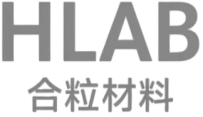Introduction: The “Metal Miracle” That Defies Physics
When China’s Baosteel and CSSC broke a 50-year French monopoly in 2021 by producing 0.7mm Invar foil – the world’s thinnest commercial-grade alloy – they unlocked China’s ability to build LNG carriers independently. This milestone cemented Invar (also called Invar 36 or FeNi36) as a strategic material reshaping global high-tech manufacturing.
1. What is Invar? The Science Behind Near-Zero Expansion
Invar is a nickel-iron alloy (36% Ni, 63.8% Fe, 0.2% C) renowned for its near-zero Coefficient of Thermal Expansion (CTE) of 1.2×10⁻⁶/K. This enables exceptional dimensional stability between -200°C to 200°C – defying conventional thermal expansion laws.
Critical Property Comparison
| Property | Invar 36 | Standard Stainless | Industrial Impact |
|---|---|---|---|
| CTE (0-100°C) | 1.2×10⁻⁶/K | 18×10⁻⁶/K | Precision instrument reliability |
| Strength Retention (500°C) | 85% | 60% | 20% longer jet engine lifespan |
| Cryogenic Toughness | No embrittlement at -196°C | High fracture risk | LNG containment safety |
| Surface Sensitivity | Corrodes with skin contact | High corrosion resistance | Requires cleanroom handling |
2. Global Supply Shift: From Monopoly to Accessible Tech
The Western Monopoly Era
-
Until 2021, France controlled 92% of LNG-grade Invar supply
-
Welding required Grade G certified welders (under 200 globally) + controlled environments (sweat causes rust penetration in 24 hours)
China’s Breakthrough
-
Ultra-thin rolling tech enabled 0.7mm foil production
-
Domestic welder certification programs solved adoption barriers
-
Result: 30% cost reduction for Asian LNG shipbuilders
3. Mission-Critical Applications: Why Invar is Irreplaceable
1. LNG Carriers: The Floating Fortresses
Invar is the only material meeting all requirements for -163°C LNG storage:
✅ Near-zero CTE → Prevents tank fractures
✅ Low thermal conductivity → Maintains cryogenic stability
✅ Chemical resistance → Withstands liquified gas corrosion
2. Aerospace & Precision Tech
-
Satellites: Invar mounts prevent optical misalignment from thermal shifts
-
5G/6G Base Stations: Stabilizes high-frequency circuit dimensions
-
Semiconductor Lithography: Sub-micron positioning accuracy
3. Emerging Frontiers
-
Fuel Cell Bipolar Plates: Oxidation resistance at 800°C
-
Fusion Reactor Components: Stability in extreme magnetic fields
4. Technical Evolution: Redefining Performance Limits
New research reveals unexpected high-temperature capabilities:
-
85% strength retention at 500°C (vs. 60% for stainless)
-
Self-protecting Cr₂O₃ oxide layer prevents degradation
Case: Aviation OEMs report 20% longer service intervals using Invar combustion chambers
5. Market Outlook: Strategic Opportunities for Buyers
Demand Surge Drivers
-
LNG Ship Boom: 68 new carriers ordered in 2024 (45% YoY Invar demand growth)
-
Semiconductor Expansion: 7.2% CAGR forecast through 2030
Competitive Supply Landscape
-
Cost Advantage: Chinese Invar 30-40% below European pricing
Conclusion: The Silent Enabler of Technological Progress
From energy infrastructure to space exploration, Invar’s unique properties solve engineering challenges deemed impossible with conventional metals. As decarbonization drives LNG and semiconductor demand, strategic partnerships with certified suppliers will define competitive advantage.
Invar Procurement: Expert Answers
Q: Why does Invar cost 10x more than standard steel?
A: High-purity nickel (36%), vacuum melting, and <50% yield rate for thin foils.
Q: Can Chinese suppliers meet ASTM F1684 specs?
A: Yes. Baosteel’s 4J36 alloy is NASA-qualified for space applications.
Q: What welding precautions are required?
A: Grade G welders in 25°C/<30% humidity cleanrooms with argon shielding gas.
Download: Invar Technical Specifications & Sourcing Guide
Includes: Material cert templates · Global pricing benchmarks · CBAM compliance checklist
Whatsapp:+8615880106190
